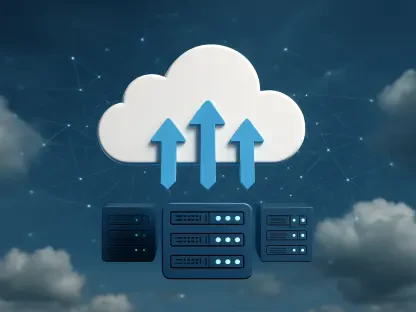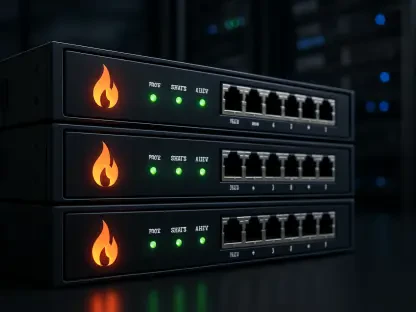The world of industrial operations is witnessing a significant transformation as cloud and edge technologies gain traction. With a focus on improving efficiency and reducing risks, organizations are leveraging these technologies to stay competitive. The accelerating digital shift within operational technology (OT) fields, such as manufacturing, logistics, energy, and utilities, is underpinned by the adoption of cloud and edge computing. These innovations are not only reshaping business strategies but also redefining how industries approach data processing and security. While many organizations are still navigating the complexities of this transition, the integration of cloud and edge solutions promises substantial advancements in industrial operations.
The Move Toward Cloud-Focused Strategies
Many organizations are shifting from a cloud-first strategy to a more selective cloud-focused approach, making deliberate decisions about where and how data is hosted. This strategic shift reflects a growing awareness of the potential challenges and benefits associated with cloud adoption in industrial settings. Despite initial hesitation, especially with non-ICS OT systems, there is a growing willingness to explore cloud use in areas like the Industrial Internet of Things (IIoT) and demilitarized zones (DMZs). This cautious approach is driven by the need to mitigate business risks while harnessing the transformative potential of cloud technology.
One of the key factors influencing this trend is the implementation of secure-by-design and secure-by-default principles. As organizations prioritize these security measures, the benefits of cloud technology—such as scalability, cost-efficiency, and enhanced data analytics capabilities—are expected to outweigh the concerns. This security-first mindset ensures that cloud solutions are robust and resilient from the outset, reducing the risk of data breaches and other cyber threats. Consequently, industries that embrace these principles are likely to see significant improvements in their operational efficiency and competitiveness.
Additionally, the move towards a cloud-focused strategy highlights the importance of aligning technological advancements with business goals. By carefully selecting cloud solutions that align with their specific needs, organizations can optimize their operations and achieve better business outcomes. This approach not only minimizes potential disruptions but also ensures that the transition to cloud technology is smooth and seamless. As a result, industries are better positioned to leverage the full potential of cloud computing, driving innovation and growth in the process.
Advantages of Industrial Edge Computing
Industrial edge computing is gaining momentum as a complementary solution to cloud adoption, offering a way to address some of the inherent challenges. By bringing data processing closer to its source, edge computing helps mitigate the risks associated with connectivity loss to cloud or on-premise servers. This capability is particularly crucial for industries like logistics and manufacturing, where real-time data processing is essential for maintaining operational efficiency and minimizing downtime. As these sectors advance quickly in industrial edge maturity, they demonstrate the potential of edge computing to enhance productivity and drive innovation.
Moreover, edge computing enables organizations to manage data more effectively by processing and analyzing it on-site. This localized approach reduces latency, improves response times, and ensures that critical decisions can be made promptly, without relying on distant servers. In sectors with tight margins, such as manufacturing and logistics, this efficiency gain can significantly impact profitability and competitiveness. Furthermore, the ability to handle data locally also enhances data security, as sensitive information is less exposed to external threats during transmission.
Conversely, industries with lower risk tolerance, such as energy and utilities, are adopting edge computing at a slower pace. However, as the benefits become increasingly evident, these sectors are gradually integrating edge solutions into their operations. The adaptability of edge computing technologies allows for a tailored approach, addressing the unique needs and challenges of different industries. By leveraging the strengths of both cloud and edge solutions, organizations can create a cohesive and resilient infrastructure that supports their digital transformation journey.
The Role of Digitization in Industrial Operations
The digitization trend within OT underscores the need for both security and non-security practitioners to consider optimal business outcomes while embracing technological advancements. Previous shifts, such as the transition from serial to Ethernet and from physical to virtualized infrastructure, highlighted the transformative potential of new technologies. These changes required a maturity journey in terms of people, processes, and technology, and the current shift towards cloud and edge computing is no different.
Security practitioners play a crucial role in this transition by ensuring that new technologies are implemented securely and effectively. They must balance the need for innovation with the imperative to protect critical infrastructure from cyber threats. This involves developing robust security frameworks, conducting regular risk assessments, and fostering a culture of security awareness within the organization. By adopting a proactive approach to security, organizations can minimize potential risks and create a safe environment for digital transformation.
Non-security practitioners, on the other hand, focus on leveraging new technologies to drive business growth and improve operational efficiency. They must work closely with security teams to ensure that technological advancements align with business objectives and do not compromise security. This collaboration is essential for achieving a seamless integration of cloud and edge solutions, enabling organizations to reap the full benefits of digitization. By fostering a culture of innovation and continuous improvement, industries can stay ahead of the curve and maintain their competitive edge in an increasingly digital world.
Conclusion: Embracing the Future with Cloud and Edge Technologies
The landscape of industrial operations is undergoing a major transformation as cloud and edge technologies become more prominent. Organizations are harnessing these technologies to enhance efficiency and minimize risks, ensuring they remain competitive. The rapid digital transformation in operational technology (OT) sectors such as manufacturing, logistics, energy, and utilities is driven by the integration of cloud and edge computing. These advancements are revolutionizing business strategies and redefining approaches to data processing and security. Although many organizations are still grappling with the complexities of this transition, the adoption of cloud and edge solutions holds the promise of significant progress in industrial operations. This shift facilitates real-time data analysis, improves operational agility, and strengthens data security measures. As industries continue to evolve, the role of cloud and edge technologies will be crucial in shaping their future, driving innovations, and ensuring sustainable growth.









